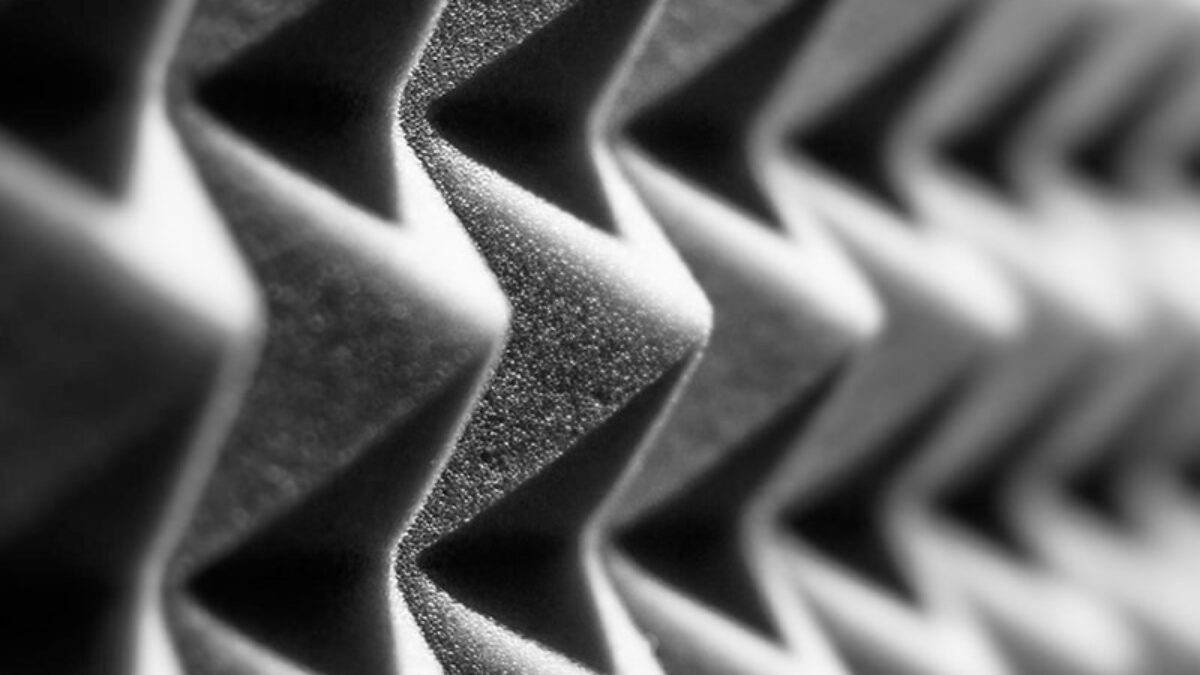Whether you’re looking to reduce harsh noises in industrial settings or soften vibrations within products, foam is widely regarded as one of the best sound abatement and vibration dampening materials on the market. Why do so many turn to foam for these applications? The material has several properties that make it effective at reducing noise and improving acoustic environments.
The Sound Absorption and Dampening Properties of Foam
Foam is an incredibly versatile material. There are hundreds of types and classifications, and changing something as small as the chemical structure can alter how well the material performs in sound abatement.
Open cell foams, for example, absorb sound waves effectively because they have small air pockets between the cells of the foam. When sound waves strike the surface of foam, they penetrate the foam and become caught in between the cells. These sounds waves are transformed into heat energy, thus reducing the amplitude of the sound waves and the audibleness. These types of foams are also a reliable way to absorb and dampen vibrations, reducing their intensity within an application.
The greater the surface area on a piece of foam, the better it will be at absorbing sound waves that come into contact with it. This is because there are more opportunities for sound waves to be absorbed and dispersed. If you’re working within a small space and still need heavy sound absorbing properties in your foam, the thickness of the foam can also help in absorbing sound. When looking for a piece of sound absorbing foam, consider its:
- Surface area
- Thickness
- Density
Other Qualities of Sound Abatement Foam
Besides their sound absorbing qualities, many types of foam are also used because of their inherent properties, which can include:
- Cost-effectiveness: foam is often more cost-effective than other acoustic materials.
- Fire Retardant Options: many types of foam are available with fire-resistant or fire-retardant properties. This is especially useful in applications where fire safety standards must be met.
- Low weight: most foams are incredibly lightweight, which helps in keeping the overall weight of finished products low.
- Ability to be fabricated: foam is easy to shape, cut, mold, and fabricate into custom pieces that can fit nearly anywhere.
- Insulation: foam can also double as an insulator against heat, electro-static discharges, vibration, etc.
- Low VOC Emissions: Volatile Organic Compounds (VOCs) are chemicals that can be released into the air and contribute to air pollution. Some eco-friendly foam options are often low in VOC emissions.
- Durability and shock absorption: many foam types provide ample protection against shock and other impact forces.
- Resistances to oils and gas: some foam types are not susceptible to damage from oil, gas, and other chemicals, giving them the ability to be used in engine compartments and other industrial applications.
While foam is effective at absorbing and dampening sound, its performance can vary depending on the specific type of foam, its thickness, density, and the frequency of the sound waves being addressed. If you need help choosing the right foam for controlling sound in your application, get in touch with the foam experts at Amcon today.


